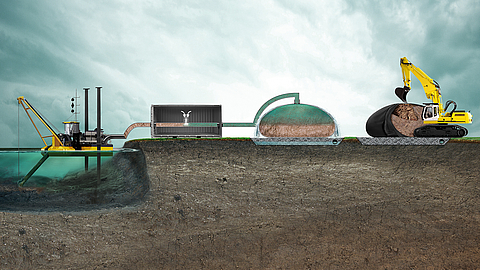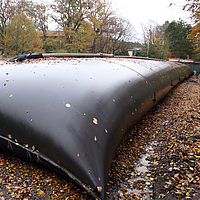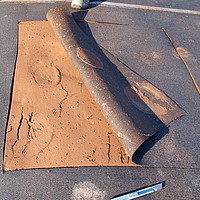Sludge dewatering
Geotextile container with which a wide variety of sludge types can be dewatered
Large quantities of sludge are produced, especially in industry and mining. The environmentally friendly disposal of these sludges often poses a challenge and is associated with great effort and costs. The dewatering of the various sludges before removal has therefore established itself as both economically and ecologically viable and can be carried out using different dewatering methods. The SoilTain® dewatering tube is a geotextile container that can be used to drain a wide variety of slurries or wet-dredged materials. The gravimetric dewatering of the sludge is accompanied by a reduction in volume. The geotextile dewatering tube system is more efficient than a classic flushing field and more cost-effective than mechanical dewatering methods such as belt or chamber filter presses.
Sludge dewatering: A variety of sludges
Easy installation & application
Extraction
To extract the sludge, the sediments can be removed with a suction dredger, for example.
Conditioning
A flocculant is added to the sludge. This causes the particles suspended in water to agglomerate into larger flakes.
Dewatering
The geotextile container dewaters the sludge in a static gravimetric process. The solids are retained by the specific opening width of the filter fabric.
Disposal
Compaction reduces the water content in the tubes until the dewatered sludge can be landfilled or recycled.
The fast and efficient dewatering process
More information






















